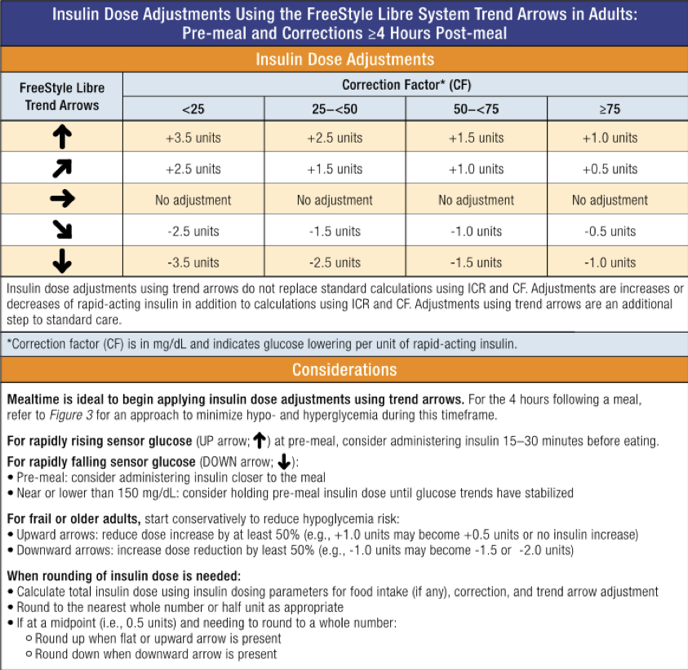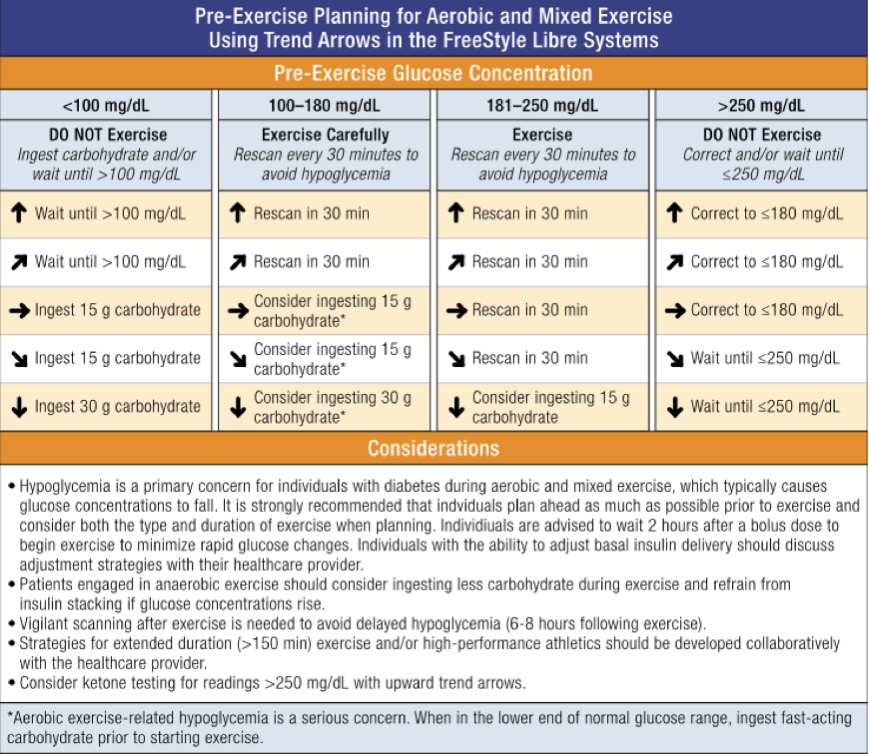How to Use FreeStyle Libre Trend Arrows to Adjust Insulin Doses
By Jimmy McDermott
 By Jimmy McDermott, Maeve Serino, and Adam Brown
By Jimmy McDermott, Maeve Serino, and Adam Brown
New Endocrine Society guidelines for FreeStyle Libre users to adjust insulin doses based on trend arrows. Plus, additional guidelines on scanning time and frequency
The Endocrine Society recently published guidelines on adjusting insulin dosing based on FreeStyle Libre continuous glucose monitor (CGM) trend arrows. These recommendations also take into account an individual’s insulin sensitivity, which is how much one unit of insulin is expected to lower blood sugar – also known as the “correction factor." These guidelines provide helpful advice on how much additional insulin to take for a rising blood sugar trend, or how much less insulin to take for a falling trend.
If you wear FreeStyle Libre, you can find the dose adjustment recommendation that applies to you in the pictures below – find your correction factor on the top row, and based on the trend you observe (left column), you’ll find the recommended insulin dose adjustment the corresponding rectangle.
For example, before a meal, an adult with a correction factor of 30 (i.e., one unit of insulin lowers blood sugar by 30 mg/dl) would:
-
Add 2.5 units to the mealtime insulin dose for a sharply rising arrow;
-
Subtract 2.5 units from the usual insulin dose for a sharply falling arrow.
This recommendation changes to adding 1 unit for the same sharply rising arrow in someone with a more insulin-sensitive correction factor of 80 (i.e., one unit of insulin lowers blood sugar by 80 mg/dl). That same insulin-sensitive person would subtract 1 unit for a double falling arrow.
As always, work with a medical professional before making any major changes to your insulin dosing. You may also need larger or smaller changes than these tables advise, depending on your experience and circumstances.
These guidelines for the FreeStyle Libre are an addition to the Endocrine Society’s inulin dosing guidelines based on Dexcom CGM trend arrows provided last year. Of note, since the FreeStyle Libre is only approved for adult use in the US, these guidelines focus on adults only.
The guidelines also offer suggestions for scanning time and frequency. For example, the guidelines recommend scanning for up to four hours following an insulin dose for high blood sugar (hyperglycemia); following low blood sugar (hypoglycemia), they suggest scanning every 15 minutes until a steady target glucose is achieved. Additional scanning and dosing guidelines are provided for specific situations, including before and after a meal and before physical activity (see below). More conservative recommendations are given for elderly adults.
Currently, Dexcom and Abbott have slightly different trend arrows, which is why there are now two different guidelines. Similar guidelines for Dexcom CGM can be found here, which will also work for G6. There are currently no “official” guidelines for other CGMs, though Senseonics appears to use the same arrow scheme as these FreeStyle Libre guidelines. Medtronic’s trend arrow scheme is different from all three, as it uses, one, two, or three arrows.
Over time, we expect to see these guidelines incorporated directly into future CGM-based calculators, which would automatically give insulin dose recommendations based on current glucose, trend, and expected carbohydrates. Both Dexcom/TypeZero and Abbott/Bigfoot are working on this type of decision support, including for users on injections.
Pre-Meal and Corrections Greater than Four Hours Post Meal

Post Meal Scanning and Insulin Dosing

Pre-Exercise Insulin Dose Planning








